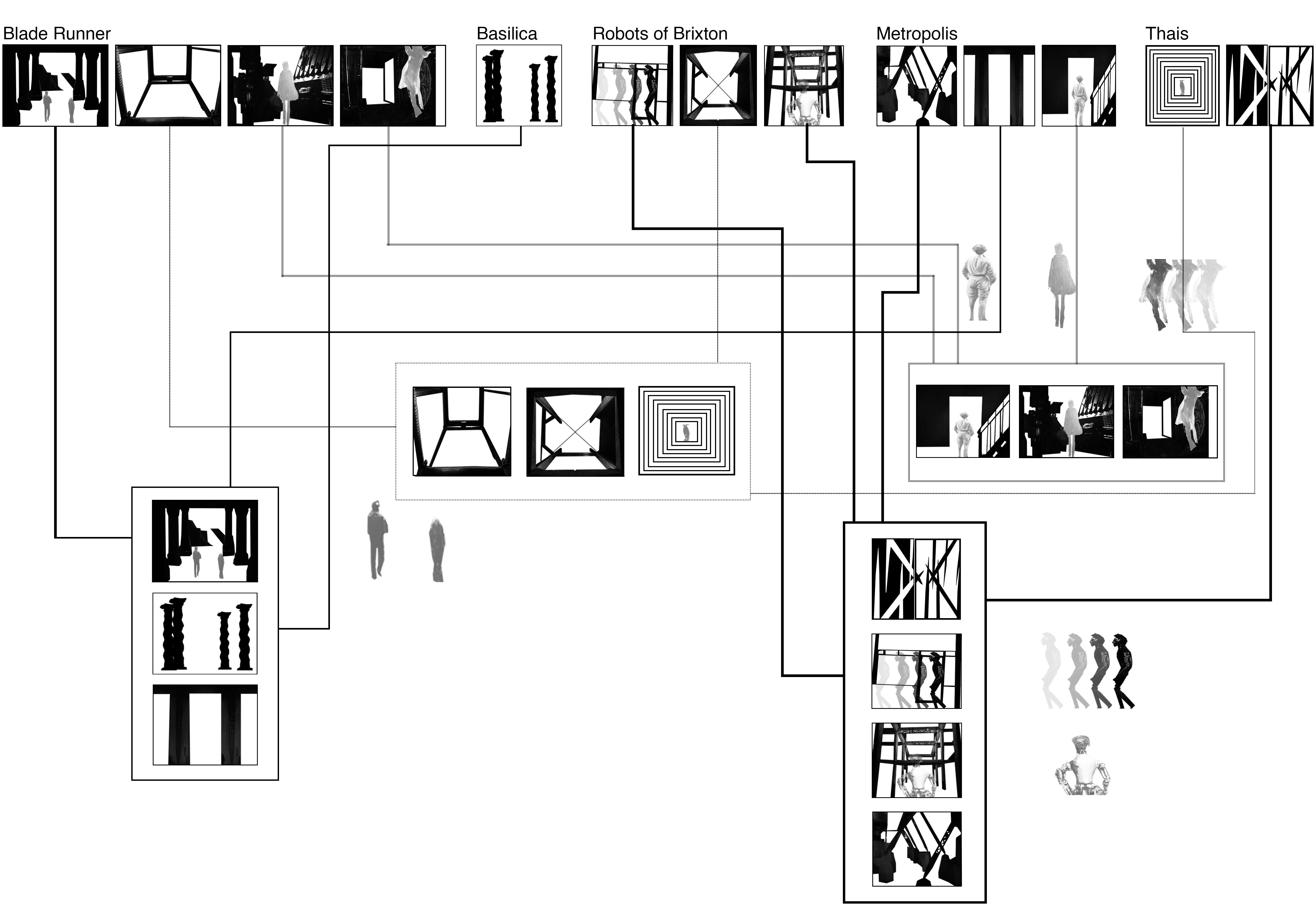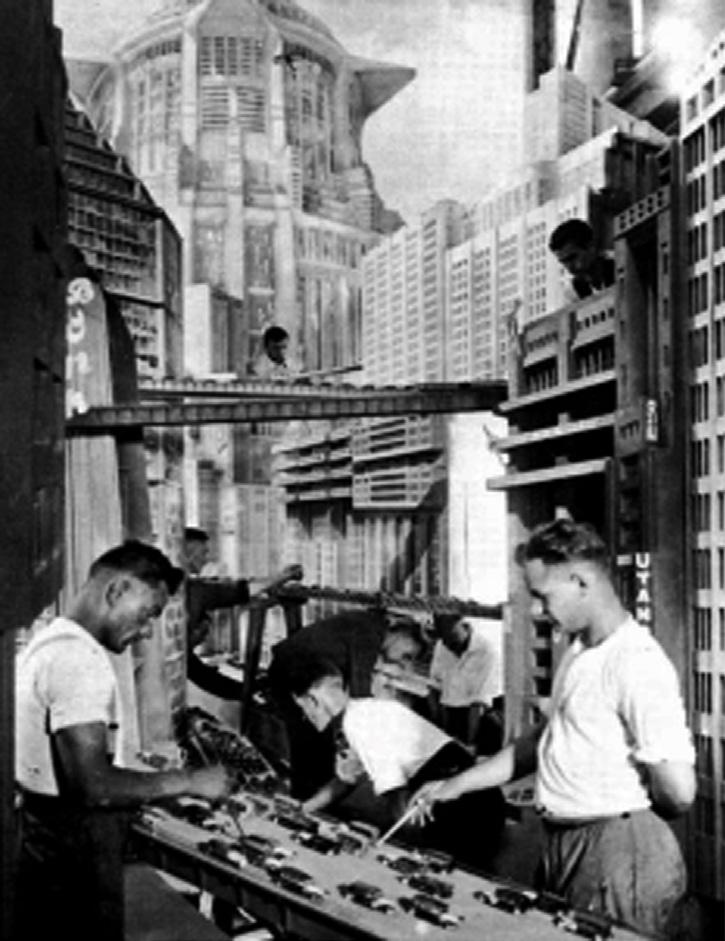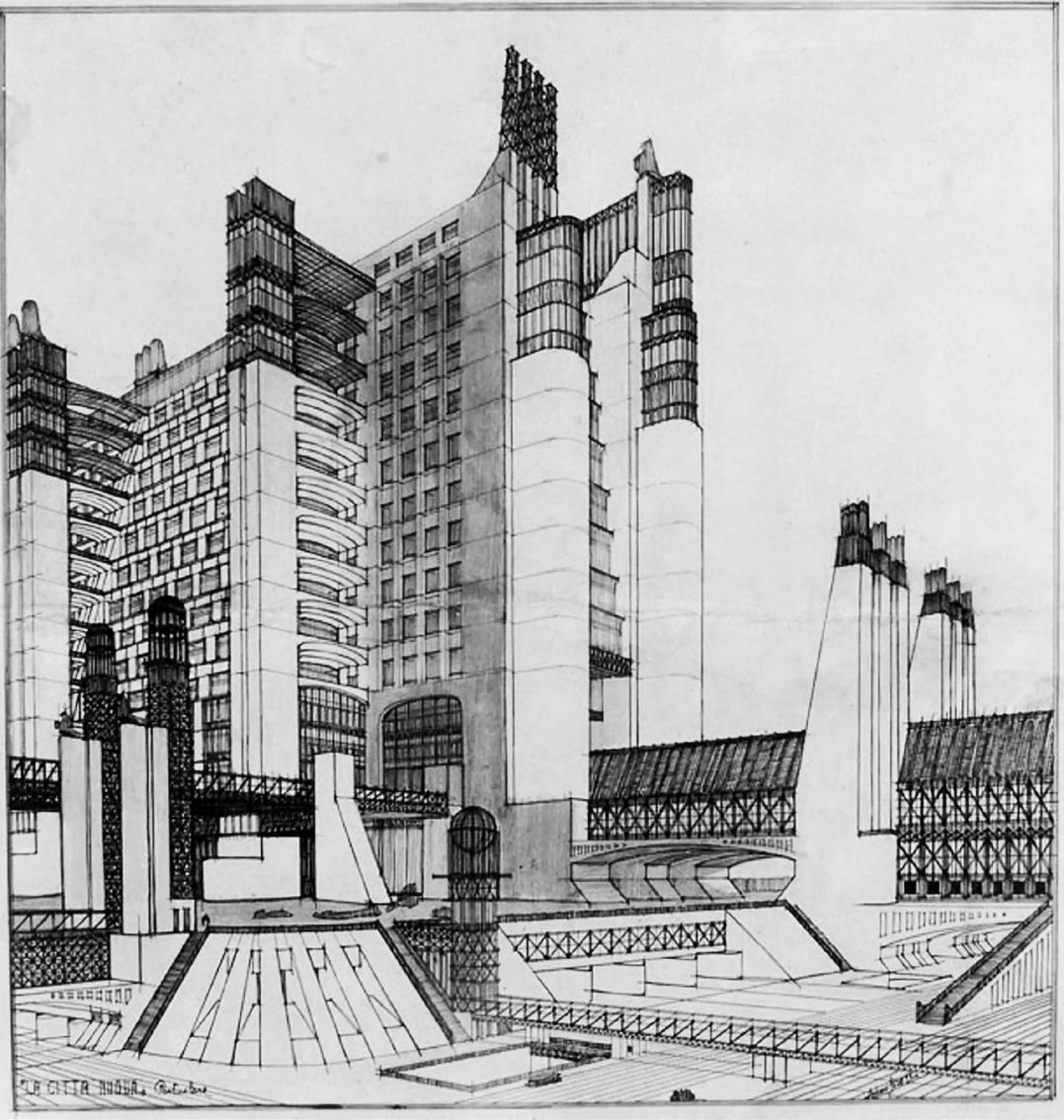
2 minute read
Introduction 01
How has futurist architecture been used as a tool to manipulate and enhance sequencing in cinema? Since the idea of film became a commodity to the population, directors and artists have tried bringing fantasy to almost reality. This began during the futurist revolution in the early twentieth century, when artist began to express their predictions of what may be, depicted in a manner of their choosing. Many architects who found solace in futurism began to push the boundaries of reality to break the societal norms of the current day and build a world like no other. Futurist ideals appear as though they are divided. One side of this vision saw the current society progressing towards a cold brutalist future in which structure is king and space is a luxury, whereas the other half held fascinations with speed and aerodynamics with a desire to produce forms that work in addition with nature to produce a new world partnership between the person, the building and the atmosphere. These two sides can be considered utopian and dystopian. However, both can be seen to be heavily influenced by architecture and the role it will play in creating the new world. Architecture can be the powerhouse behind the futurist ideologies as it allows for the viewer to become immersed in the environment and creates a better understanding of the space along with a more relatable impression (James Stevens Curl, 2018).
The medium of cinema allowed architects to begin exploring how it would feel to be within a utopian or dystopian society. By using sets and stages the sequence of film can be manipulated, the field of view can be distorted or directed by the context it is performed in. Works from Fritz lang during the 1920s does this through its use of narrowing spaces and exaggerated halls, allowing for the scene to feel compact and intense or freeing and calming yet almost daunting. In doing these architectural producers and designers began to re-invent cinema as a process to pull the viewers in to become more than just an element of the third person. Two ways in which they did this were, architecturally constructing rooms and or spaces that were not too dissimilar from that of the real world, allowing for the viewer to relate to what they are seeing, as discussed briefly above. The second being the magnification and exaggeration of current (to the time in which filmed) social issues such as class hierarchy or racial division. Kibwe’s Robots of Brixton, which is later dismantled in this dissertation, is a perfect example of futurist exaggeration of current racial issues in Brixton.
Advertisement
During the production and creation of these spaces artists and architects relied heavily on their ability to express their visions through drawing. The use of sketches gave the futurist the ability to convince the script writers and directors that what they had envisioned could become reality. Within the early stages of cinema sets were created through temporary foreground structures to mimic that in which the actors would be standing, with large canvas paintings in the background creating the illusion of a large city scape or a never-ending horizon. Could it then be considered that the art of cinema must rely on the art of the architect? Due to the use of foreground structures this then magnifies the importance of architectural influence within the set, meaning the structures must be designed in such a way that the sequence of events does not become broken and disorientated the journey is clear and impactful. The modern interventions of cinema are empowered due to the availability of digital technologies, the use of AI depictions allows for architects to have high resolution images of the scenes they wish to create. In having this the architect can produce mock reality visuals unlocking the ability to predesign the sequences of cinema, giving an unobstructed landscape to mould and control. However, many of the futurist inspired cinema discussed were produced before the development of such technologies. Anton Giulia Bragaglia’s film Thais, filmed in 1917, relied heavily on set design alone therefore relying on the architecture alone. Could it still be the case that for modern cinema architecture plays such a crucial role even with the ability of CGI and other digital rendering software’s?




